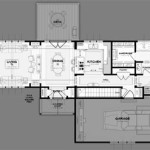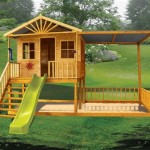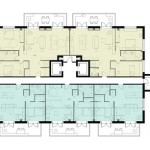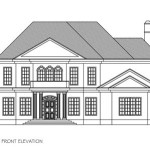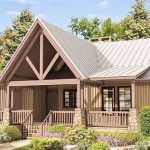Play House Plans: Creating a World of Fun for Children
Playhouses offer children a dedicated space for imaginative play, fostering creativity, social skills, and a sense of ownership. Choosing the right playhouse plan requires careful consideration of factors such as available space, budget, skill level, and desired features. This article explores various aspects of playhouse plans, aiming to provide comprehensive information for those embarking on this rewarding project.
Size and Location:
The first step in choosing a playhouse plan involves assessing the available space. Measure the area designated for the playhouse, keeping in mind necessary clearances for access and safety. Smaller yards might benefit from compact designs, while larger spaces allow for more elaborate structures. Consider the surrounding landscape, ensuring the playhouse integrates harmoniously with the existing environment. Level ground is ideal for stability and ease of construction.Style and Design:
Playhouse plans come in a wide array of styles, from traditional cottages and whimsical treehouses to modern minimalist designs and themed structures like pirate ships or castles. The chosen style should reflect the child's interests and preferences. Consider the overall aesthetic of the backyard and choose a design that complements the existing architecture and landscaping.Materials and Construction:
Common materials for playhouses include wood, plastic, and metal. Wood offers a classic look and is relatively easy to work with, while plastic is durable and low-maintenance. Metal provides strength and longevity, but requires more specialized construction skills. The chosen material should be appropriate for the climate and budget. Pressure-treated lumber is recommended for outdoor structures to resist rot and insect damage.Features and Functionality:
Playhouse plans can incorporate various features to enhance play value and functionality. Windows, doors, and a small porch add a touch of realism. Interior features such as lofts, built-in seating, and play kitchens can further stimulate imaginative play. Consider incorporating storage solutions for toys and accessories to keep the playhouse organized.Safety Considerations:
Safety is paramount when designing and building a playhouse. Ensure the structure is stable and secure, with no sharp edges or protruding nails. Adequate ventilation is essential to prevent overheating. Handrails and guardrails should be installed on elevated platforms and stairs. Choose non-toxic paints and finishes to protect children's health.Budget and Time Commitment:
Building a playhouse requires a financial investment, the extent of which depends on the size, materials, and complexity of the chosen plan. Develop a realistic budget before starting the project, factoring in the cost of materials, tools, and any professional labor required. The time commitment will vary based on the complexity of the plan and the builder's skill level. Allocate sufficient time for planning, construction, and finishing touches.DIY vs. Pre-fabricated Kits:
Playhouse plans can be purchased online or from home improvement stores, offering detailed instructions and material lists. DIY projects provide greater flexibility in design and customization. Pre-fabricated kits offer a convenient alternative, providing pre-cut materials and simplified assembly instructions. Choose the option that best suits your skill level, budget, and time constraints.Building Permits and Regulations:
Check local building codes and regulations before starting construction. Some jurisdictions require permits for playhouses that exceed a certain size or height. Ensure the planned structure complies with all applicable regulations to avoid potential issues.Accessibility and Inclusivity:
When designing a playhouse, consider accessibility features for children with disabilities. Ramps, wider doorways, and adaptive play equipment can ensure all children can enjoy the space. Consult with accessibility experts or organizations for guidance on incorporating inclusive design elements.Maintenance and Longevity:
Regular maintenance is essential to ensure the playhouse remains safe and enjoyable for years to come. Inspect the structure periodically for signs of damage or wear and tear. Repaint or re-stain the exterior as needed to protect the wood from the elements. Clean the interior regularly to maintain hygiene. Address any repairs promptly to prevent further deterioration.Landscaping and Surroundings:
The area surrounding the playhouse can enhance the overall play experience. Consider adding landscaping features such as a small garden, a pathway, or a designated play area with sand or gravel. Outdoor furniture, such as a picnic table or benches, can provide a space for adults to supervise and interact with children.Choosing the Right Plan:
Selecting the right playhouse plan requires careful consideration of all the factors discussed above. Prioritize safety, functionality, and aesthetics while staying within budget and time constraints. Involve children in the decision-making process to ensure the playhouse meets their needs and interests. Thorough planning and careful execution will result in a cherished play space that provides years of enjoyment and fosters creativity and imagination.
Free Playhouse Plans A Fun Project For The Whole Family Play Houses Build

Outdoor Playhouse Plans Home Design Lifestyle Jennifer Maune

Playhouse Plans Step By Construct101

Woodsmith Backyard Playhouse Plans Woods

Playhouse Rogue Engineer

Pin On Paulsplayhouses Customer Photos

Outdoor Playhouse Plans Home Design Lifestyle Jennifer Maune

Amazing Kids Playhouse Plans Free Woodwork City Woodworking

20 Free Playhouse Plans Ana White

Playhouse Plans Kids Woodmanor Playhouses

